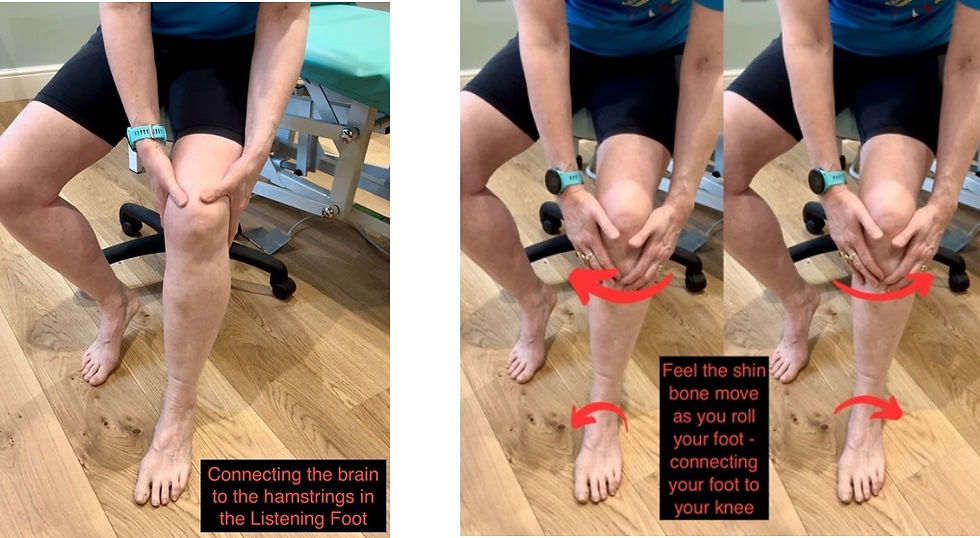Are Your Feet Tuned In?
- Jane Morris

- Apr 8, 2024
- 3 min read
Why is it important for our balance and posture?
Ideal posture is that which requires the least amount of muscular effort to arrange the body to move efficiently and effectively. Our feet play an important role in this.
The soles of our feet work like pressure pads, sending continual messages as to where the weight is being carried. This sensory information is sent along with visual and inner-ear input, (constitute threads relating to our balance), all of this is sent to our brain about where to place our centre of gravity.
Our feet are important initiators of a positive support response – this means that weight bearing pressure through the feet activates our antigravity muscles, in particular those that extend our hips and knees. This is what equips us to walk, run and jump.
So, if you want well-functioning butt muscles – first start a conversation with your feet!
Here is he West we desensitise our feet from an early age by wrapping them in shoes and socks, rarely giving them sufficient sensory variation. If we don’t receive enough stimulation and feedback then in order to create more sensory noise we increase tension in our feet, making them more rigid. However, all this does is make our feet and ankles even less supple and we feel even less, which can potentially lead to hammer toes, clawing of the toes, digging in of the big toe to the ground, restricting the ankle mobility and too much contraction to the muscles around the foot, ankle and lower leg. This makes balance even harder, not allowing us to adapt to fluctuations in the surface of the ground and so our posture can become compromised.
There are occasions when a foot can be too unresponsive and become saggy – this is just as problematic, as the foot isn’t listening and talking to you to provide that support response. That then doesn’t light up the circuitry in the nervous system to support your posture.
So, feet need to listen. Even the ancient practice of Tai Chi uses your feet as the gateway to movement.
This is such a common problem and affects so many people from all walks of life, not just the older age group, but elite athletes, office workers, people who have sustained injuries in a range of different parts of their body such as lower back, knee or even shoulders.
So to establish the foot connection for our posture, the first step in to increase the sensory connection to the brain.
Why not try and explore your feet:

First take off your shoes and socks.
Sit in a comfortable position in a chair and feet on the ground.
Imagine your feet are like big play – dough feet – lovely and soft.
Now focus on one foot for the minute and notice how your foot settles on the floor – do you feel one part of the foot more than another.
Place your hands around the back of one of your thighs - focus on one foot at a time. Feeling those hamstrings at the back of the knee, as if they are a set of reins, on the inside and outside of your thigh.
Gently and with minimal effort roll your foot from side to side… what do you feel? See how little effort you can make to produce some lovely movement into your foot.
Feel how those hamstrings also work as you move your foot.
If you struggle with this, then place your fingers onto your shin so that you are circling your leg with your hands and roll your soft foot from side to side. Notice how the shin bone also moves as you roll your foot from side to side.
If that is still difficult pick up your foot and give it a rub to remind it that it is indeed a structure that feels! Then have another play.
Then do the same with. The other foot.
There’s no right and wrong… what do you experience?
Was it easier on one side? Was there more mobility or more sensation on one side? Does one foot feel more pliable or more solid on one side? This is the beginning of teaching feet to listen!
So, remember, having feet that listen, means that forces are dissipated and spread right through the body. This will give a better sense of connection and improves the body’s support mechanism and therefore help reduce likelihood of injury.
Blog by Jane Morris. If you'd like to book an appointment today, please contact us.







Comments